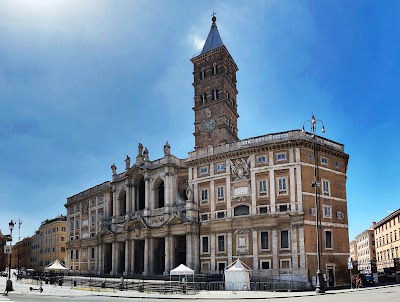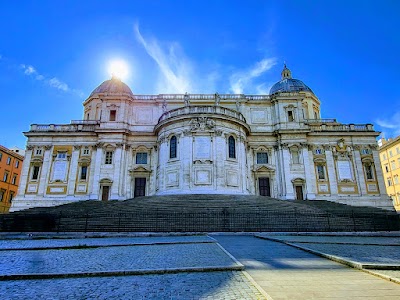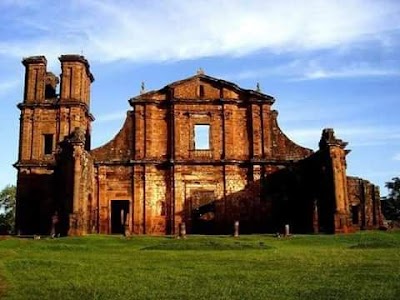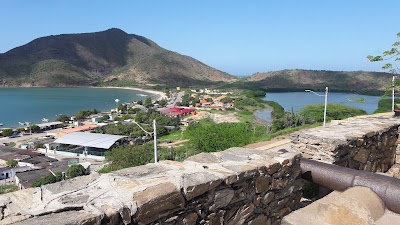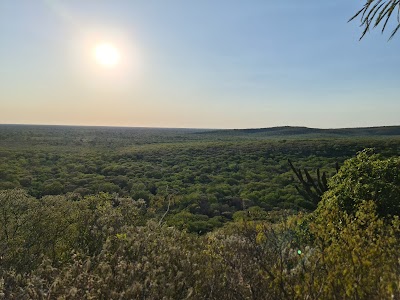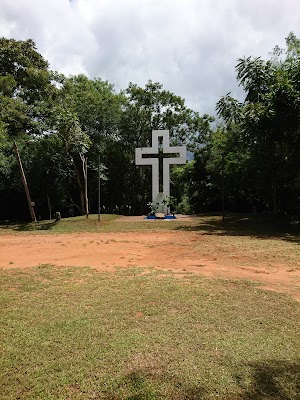Ruins of Santa María la Mayor (Ruinas de Santa María la Mayor)
Overview
Situated in the picturesque **Alto Paraguay Department**, the **Ruins of Santa María la Mayor** stand as a powerful testament to the enduring legacy of the Jesuit missions in South America. Established in the early 17th century, this historical site invites visitors to delve into the region's rich cultural and religious heritage, making it an unmissable destination for history enthusiasts and curious travelers alike.
The history of Santa María la Mayor dates back to **1647**, when Jesuit missionaries sought to evangelize the indigenous Guarani population. The mission quickly flourished, known for its remarkable architectural structures and well-organized social and economic systems. At its zenith, the mission housed thousands of indigenous inhabitants who were educated in various European arts, crafts, and agriculture under the guidance of Jesuit priests.
One of the most striking features of the ruins is the **church facade**, which, despite the passage of time, retains its intricate carvings and stonework. Constructed with locally sourced materials, the original church showcases a unique blend of **European baroque** and **indigenous architectural styles**. As you stroll through the remnants of this once-majestic structure, you can vividly imagine the grandeur and spiritual significance it held for its inhabitants.
The mission complex also includes residential quarters, workshops, and communal spaces that laid the foundation for a self-sustaining society. The meticulous urban planning exemplifies the advanced knowledge and skills of the Jesuits, along with their commitment to improving the lives of the Guarani people. Modern archaeologists have uncovered numerous artifacts, such as pottery, tools, and religious items, which provide insight into daily life and customs within the mission.
Beyond its historical significance, the **Ruins of Santa María la Mayor** hold a special place in the hearts of Paraguayans as a symbol of **resilience** and **cultural fusion**. The Jesuit missions are celebrated for fostering a unique cultural synthesis, blending European Christianity with native traditions. This harmonious coexistence is reflected in the local folklore, music, and crafts that continue to thrive in the region today.
For visitors, exploring the ruins is not only an educational experience but also an opportunity to connect with the tranquil and scenic beauty of the **Alto Paraguay landscape**. Surrounded by lush forests and rolling hills, the site offers a serene backdrop that enhances the spiritual ambiance of the historic ruins. Nature enthusiasts will appreciate the chance to spot a variety of wildlife, including exotic birds and butterflies that inhabit the area.
Interesting facts about the **Ruins of Santa María la Mayor** include its designation as one of the **UNESCO World Heritage Sites** in the region. This recognition underscores the global importance of the mission and its contributions to cultural diversity and historical preservation. Additionally, the site is a focal point for academic research, with ongoing archaeological projects aiming to unveil further insights into the Jesuit and Guarani way of life.
To make the most of your visit, tourists are encouraged to hire local guides who can provide in-depth information and captivating stories about the missions. Many of these guides are descendants of the original inhabitants, offering a personal connection and unique perspectives on the history and legacy of Santa María la Mayor.
In conclusion, the **Ruins of Santa María la Mayor** offer a profound and enriching experience for foreign tourists, seamlessly combining historical exploration with natural beauty. As you wander through the ancient stone structures, you will not only step back in time but also gain a deeper appreciation for the cultural amalgamation that defines Paraguay's heritage. Whether you are a history buff, a nature lover, or simply seeking to understand the roots of Paraguayan culture, this remarkable site promises to leave a lasting impression.


